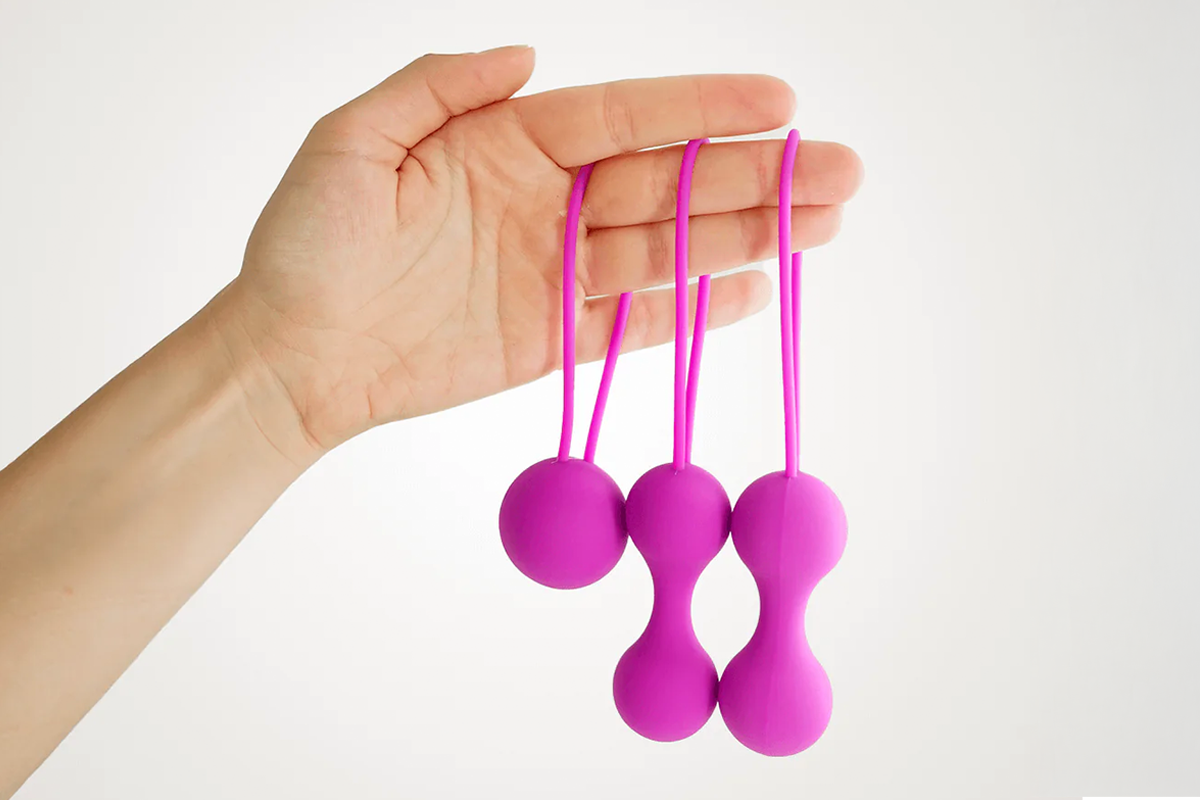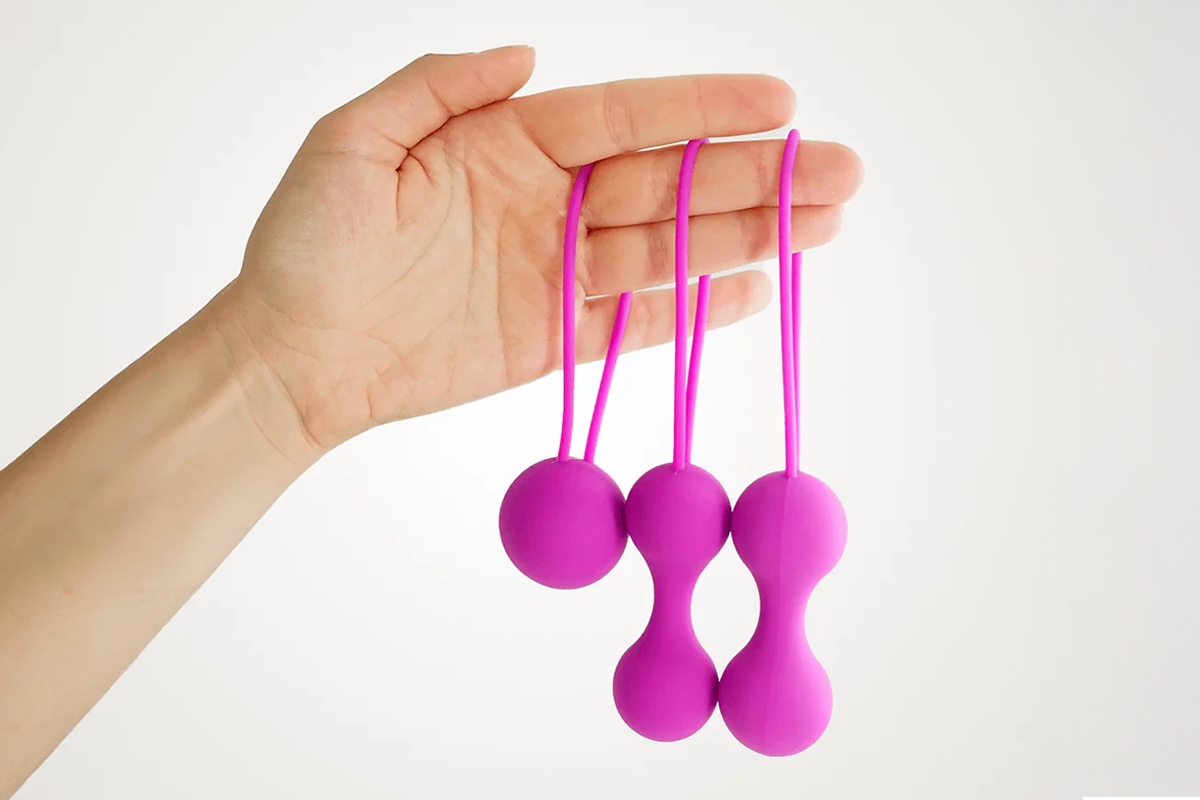Maintaining optimal pelvic health is crucial for overall well-being and quality of life. Kegel weights offer an effective method to strengthen pelvic floor muscles, but proper technique is essential for achieving desired results. This guide provides comprehensive, step-by-step instructions on using Kegel weights safely and effectively. By following these evidence-based recommendations, you can develop a consistent routine that supports long-term pelvic health. Whether you're new to pelvic floor exercises or looking to enhance your current regimen, mastering the use of Kegel weights can lead to improved bladder control, enhanced intimate experiences, and increased core stability. Let's explore the proper techniques for incorporating these beneficial tools into your wellness routine.
What are Kegel weights?
Kegel weights, also known as vaginal cones, are devices designed to strengthen pelvic floor muscles. These small, weighted objects are inserted into the vagina to provide resistance during Kegel exercises. They can help improve bladder control and sexual function. (1)
💡 When inserted, the pelvic floor muscles naturally contract to hold the weight in place. This action helps users identify and engage the correct muscles, enhancing the effectiveness of Kegel exercises.
Benefits of using Kegel weights
Strengthening pelvic floor muscles
Using Kegel weights can significantly enhance pelvic floor muscle strength. These specialized devices provide resistance, helping to tone and build muscle more effectively than exercises alone. Regular use leads to improved muscle control and endurance, which is one of the key women's benefits of Kegel exercises.
Improved bladder control
One of the primary benefits of strengthening pelvic floor muscles is better bladder control. Kegel weights can help reduce urinary incontinence by improving muscle strength and responsiveness.
This can lead to fewer leaks and greater confidence in daily activities—particularly for those experiencing peeing while having sex, laughing, coughing, or dealing with urinary incontinence while running, a concern often linked to weak pelvic floor muscles.
Enhanced intimacy and core strength
Stronger pelvic floor muscles can positively impact intimate experiences. Additionally, these exercises contribute to overall core strength, potentially improving posture and reducing lower back pain.
Regular use of Kegel weights may lead to increased sensation and pleasure during sexual activity. (2) Please note, if you have any pelvic floor pain during intercourse (whether initial or deeper penetration) the use of vaginal weights is not recommended.
How to insert Kegel weights?
To properly insert Kegel weights, follow these steps:
- Find a comfortable position, such as lying down or sitting upright.
- Relax your pelvic floor muscles and gently insert the weight into your vagina. Start with the lightest weight or smallest size.
- Once inserted, contract your pelvic floor muscles to hold the weight in place.
💡 Use a water-based lubricant if needed for easier insertion.
Start with the lightest weight and gradually increase as your muscles strengthen. The weight should rest just inside the vaginal opening, with the removal string hanging outside.
Remove the weight immediately if you experience any pain or discomfort.
How often should you use Kegel weights?
Consistency is key when using Kegel weights to strengthen your pelvic floor muscles. For optimal results, aim to use Kegel weights 3-5 times per week, gradually increasing duration as you build strength. Start with 5-10 minute sessions, working up to 15-20 minutes as your muscles adapt. Allow rest days between sessions to prevent overtraining.
Be patient - it may take 4-6 weeks of regular use to notice improvements in bladder control and pelvic function. Always consult a pelvic health specialist before beginning a new exercise routine with Kegel weights, especially if you have any existing health conditions.
How long to leave in Kegel balls?
Duration guidelines
When using Kegel weights to strengthen pelvic floor muscles, it's important to follow proper duration guidelines. Most experts recommend (3) holding vaginal cones or balls for 15 minutes per session, 2 times daily.
Progression and safety
As you build strength, you can extend the duration up to 30 minutes per session. However, avoid overexertion - listen to your body and stop if you experience any discomfort. Proper technique is crucial for optimal results and safety when using Kegel weights.
How to clean Kegel balls?
Proper cleaning techniques
Maintaining proper hygiene for Kegel balls is crucial to prevent infections and ensure safe use.
💡 Kegel balls should be thoroughly cleaned after each use with anti-bacterial soap and warm water.
For silicone, stainless steel, or Pyrex balls, you can also clean them in the top rack of a dishwasher.
Additional cleaning methods
Avoid harsh chemicals or abrasive cleaners that could damage the balls or irritate delicate tissues. For balls with string attachments, be sure to clean the string as well. After washing, allow the Kegel balls to air dry completely before storing in a clean, dry place to prevent bacterial growth.
Should you be standing, sitting, or lying down when using Kegel weights?
When learning how to use Kegel weights, body position is crucial for optimal results. Beginners should start by lying down, as this reduces gravitational pressure on the pelvic floor. As strength improves, progress to a seated position, which introduces moderate resistance. For advanced users, standing exercises provide the greatest challenge, fully engaging the pelvic muscles against gravity.
Regardless of position, proper form is essential.
💡 Focus on isolating the pelvic floor muscles without tensing the abdomen, buttocks, or thighs.
Tips for beginners using Kegel weights
Start slowly
When first learning, begin with short 5-minute sessions. Start by lying down before progressing to seated and standing positions. Focus on proper technique - squeeze and lift the pelvic floor muscles without tensing your abdomen or buttocks.
Listen to your body
Pay attention to any discomfort and stop if you experience pain. Starting with lighter weights and gradually increasing as your muscles strengthen. Be patient - it may take several weeks to notice improvements.
Don't overdo it
Limit sessions to 3-5 times per week initially. Aim for 30-40 Kegel exercises daily, spread throughout the day. Overdoing it can lead to muscle fatigue.
💡 Consistency is more important than intensity.
Sample Kegel weights exercise routine
Step-by-step exercise
Here is a sample step-by-step Kegel weights exercise routine:
- Warm up with some light cardio or gentle stretches to prepare your pelvic floor muscles.
- Insert the Kegel weight or weights vaginally while lying down or sitting upright. Start with a lighter weight as you are learning the technique.
- Squeeze and lift your pelvic floor muscles to gently raise the weights. Hold for 5-10 seconds, then release.
- Repeat the squeeze and lift 10-15 times for one set.
- Rest briefly, then complete 2-3 more sets of 10-15 repetitions each.
- Once you can comfortably complete 3 sets of 15 reps, consider gradually increasing the weight.
- End your session by removing the weights and doing some relaxing stretches or deep breathing exercises to cool down.
- Aim for 3-5 Kegel weight sessions per week, allowing rest days in between for your muscles to recover.
Progress gradually
Start with the lightest weight and hold for 15 seconds. Gradually increase duration and weight as your strength improves. Remember to breathe normally throughout the exercises.
Vary your positions
Practice using Kegel weights while standing, sitting, and lying down to challenge your muscles in different ways. This helps build overall pelvic floor strength and control.
What are the alternatives to using Kegel weights?
Biofeedback
While Kegel weights are effective for pelvic floor strengthening, several alternatives exist for those seeking different options. Biofeedback pelvic floor training devices, such as Perifit Care, offer a high-tech approach by using sensors and smartphone apps to guide exercises. These tools provide real-time feedback on muscle contractions, making them especially helpful for beginners who are learning how to use a pelvic floor muscle trainer correctly.
Low-tech solutions
For a low-tech option, simple Kegel exercises without weights can still be beneficial. These can be performed discreetly throughout the day, making them convenient for busy schedules. Additionally, some find success with vaginal cones, which function similarly to Kegel weights but may be easier to insert and remove. For those looking to strengthen pelvic floor muscles without Kegels, tools like vaginal cones or engaging in core-based exercises such as yoga or Pilates can also offer effective alternatives.
Yoga and Pilates
Yoga and Pilates are excellent alternative methods for strengthening the pelvic floor muscles. Practicing yoga to strengthen pelvic floor muscles can include poses like Bridge Pose, Squat Pose, and Locust Pose, all of which engage and tone this area. Pilates pelvic floor exercises, such as the Hundred, Single Leg Stretch, and Teaser, are also highly effective at targeting and reinforcing these muscles. Both yoga and Pilates offer low-impact yet challenging pelvic floor exercises that can be easily incorporated into a regular routine.
Ultimately, the best method depends on individual preferences and needs. Consulting a pelvic health specialist can help determine the most suitable approach for optimal results.
In conclusion, incorporating Kegel weights into your pelvic floor routine can yield significant benefits when done correctly and consistently. By following the steps outlined in this guide, you can safely strengthen your pelvic muscles and improve overall pelvic health. Start slowly, listen to your body, and gradually increase the weight and duration as you build strength over time. While results may vary, many individuals experience positive outcomes with regular use. Ultimately, taking proactive steps to maintain pelvic floor health can enhance quality of life and physical wellbeing for years to come.
Sources:





